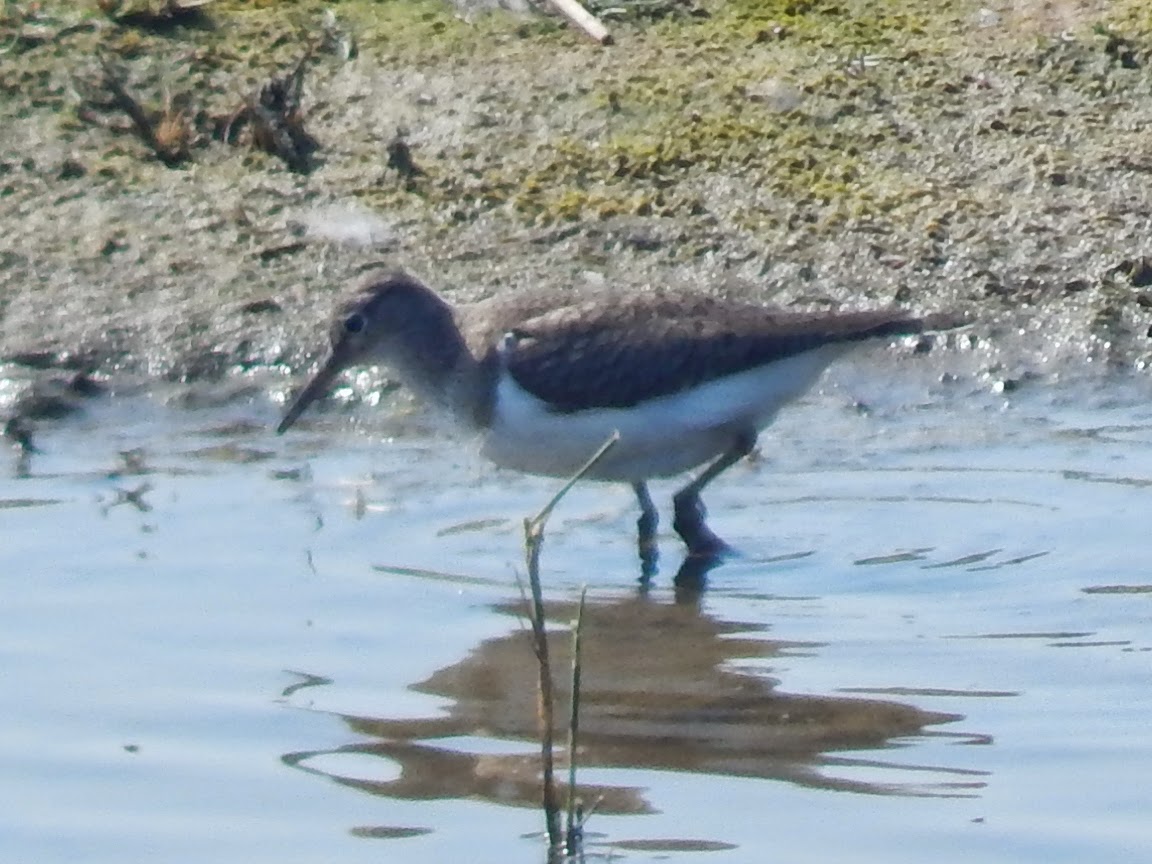I was still missing a few possible waders and both Gray (Black-bellied) Plover and Golden Plover had been reported at Oare Marshes along with, what would be for some, a twitch bird - a Bonaparte's Gull. We spent an hour and a half at the reserve mostly in the drizzle and dipped on all these birds. But we saw lots of Black-tailed Godwits, Curlew and Redshank on the mudflats and Lapwing, Ruff and Common Sandpiper on the Flood.
 |
| Black-tailed Godwit |
 |
| Common Sandpiper |
Black-winged Stilts had bred at Cliffe Pools this year, although the young were predated, and I had some hope of adding this bird to my UK list. However local birders said that they did not know if the adults were still around. The pools were pretty disappointing although we had a close view of a Hobby chasing a Swift and a distant view of a Whimbrel on the mudflats of the Essex side of the Thames.
 |
| Black-headed Gull |
A long delay at the M25/A13 roundabout - we moved half a mile in one hour - forced us the long way home and we took back roads from Wennington to Langdon Hills. As luck would have it we found a couple of Red-legged Partridges on the road near Bulphan!


























